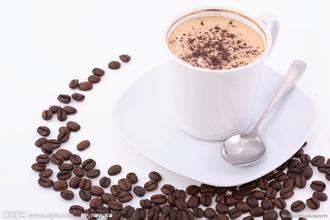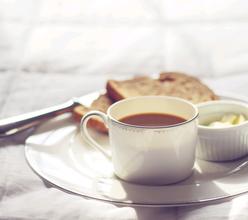Kinds of coffee, all kinds of coffee beans.
Let's talk about the type of coffee again:
There are four kinds of coffee trees in the world, but the coffee we drink now is mainly the fruit of two kinds of coffee trees, one is Arabica, the other is Robasta.
Coffee trees in Arabica are not easy to grow, many are on high-altitude slopes, and picking needs to be done manually. But it is better to have a balanced taste and less caffeine. And Robasta is relatively easy to grow, a variety of heat-resistant, cold-resistant, moisture-resistant, drought-resistant, disease-resistant. Once upon a time, coffee in Vietnam was planted by Robasta because of leaf rust and all the coffee trees planted in Arabica died. In addition, Rothbata is also relatively easy to harvest, in addition to manual vibration machines can also be competent. This variety has all kinds of benefits, but what is fatal is that the coffee beans produced are poor in aroma, lack of bitterness, lack of acidity, and high caffeine content, so they are mostly used to make instant coffee. Now most of the beans on the market are grown in Arabica.
Global coffee distribution
The choice of coffee beans
In addition to two general categories of coffee beans, different soils and climates also have a great impact on the quality of coffee beans. When you buy coffee beans, you may see that dazzling adjectives are used to describe different coffee flavors, such as tropical fruit flavor, caramel flavor, nut flavor, cocoa flavor and so on. But when you do get the beans, you will find that you can't taste so many flavors in the description at all, and you will inevitably laugh at yourself at "dull taste buds" or even lose interest in coffee. In fact, I think it is very normal not to taste the flavor described. These descriptions of coffee flavor actually come from the coffee flavor wheel produced by SCAA (Specialty Coffee Association of America, American Special Coffee Association).
Coffee flavor wheel
It describes and defines the taste spectrum of coffee according to its taste (sour, bitter, sweet, salty) and wet aroma (flower, fruit, nut, chocolate, spice, etc.). In fact, as a standardized process, it serves for professional cup testing systems. For the general public who drink coffee is just a simple hobby, there is really no need to take it seriously, not to mention that the taste itself is very subjective, and it is king if you think it tastes good.
Various varieties of coffee beans
The following begins to introduce the characteristics of various varieties of coffee beans, because there are so many varieties that it is difficult to introduce them one by one, so only some of the more famous ones are selected to talk about. In fact, it is not a realistic thing to understand all kinds of coffee in the world, it is best to combine various producing areas, beans (iron pickup, bourbon, etc.), treatment methods (washing, sun, etc.) to come up with an overall concept, and then to distinguish the differences of all kinds of coffee.
The editor asked me to add specific product introductions and links, which is really a bit difficult, because the beans now baked are bought by cafes and then baked by themselves, and some of them will be sold on the Internet. If you give a specific link, you will inevitably have the suspicion of advertising, so I will only give you a search link for the baked beans. Generally speaking, a professional bakery will write down in the description which manor it comes from, the way the coffee beans are handled, the grade, the baking depth and the flavor. Even if it is not written, you can ask the shopkeeper about it.

Important Notice :
前街咖啡 FrontStreet Coffee has moved to new addredd:
FrontStreet Coffee Address: 315,Donghua East Road,GuangZhou
Tel:020 38364473
- Prev

The production process of coffee beans
Coffee beans are not born like this. Let's briefly talk about the production process of coffee beans. First of all, there must be a coffee tree, and then there must be a coffee tree, and then the coffee tree will bear coffee fruit, and then the coffee tree will bear coffee fruit, and the picked coffee fruit will be treated by the sun or washing, peeling off the skin and flesh, and getting the coffee raw beans.
- Next

Coffee beans are washed and dried, flat beans and round beans
Small and round dark brown coffee beans, in the grinder quietly exudes a fragrant fragrance, into the cup to present the beautiful color of amber, this is the average person for coffee very deep impression of three. As you explore the history of coffee and its beauty, you can also see the coffee trees that are being caressed by the tropical sun and their green leaves sparkle. It has little white flowers similar to jasmine,
Related
- Does Rose Summer choose Blue, Green or Red? Detailed explanation of Rose Summer Coffee plots and Classification in Panamanian Jade Manor
- What is the difference between the origin, producing area, processing plant, cooperative and manor of coffee beans?
- How fine does the espresso powder fit? how to grind the espresso?
- Sca coffee roasting degree color card coffee roasting degree 8 roasting color values what do you mean?
- The practice of lattes: how to make lattes at home
- Introduction to Indonesian Fine Coffee beans-- Java Coffee producing area of Indonesian Arabica Coffee
- How much will the flavor of light and medium roasted rose summer be expressed? What baking level is rose summer suitable for?
- Introduction to the characteristics of washing, sun-drying or wet-planing coffee commonly used in Mantenin, Indonesia
- Price characteristics of Arabica Coffee Bean Starbucks introduction to Manning Coffee Bean Taste producing area Variety Manor
- What is the authentic Yega flavor? What are the flavor characteristics of the really excellent Yejasuffi coffee beans?

